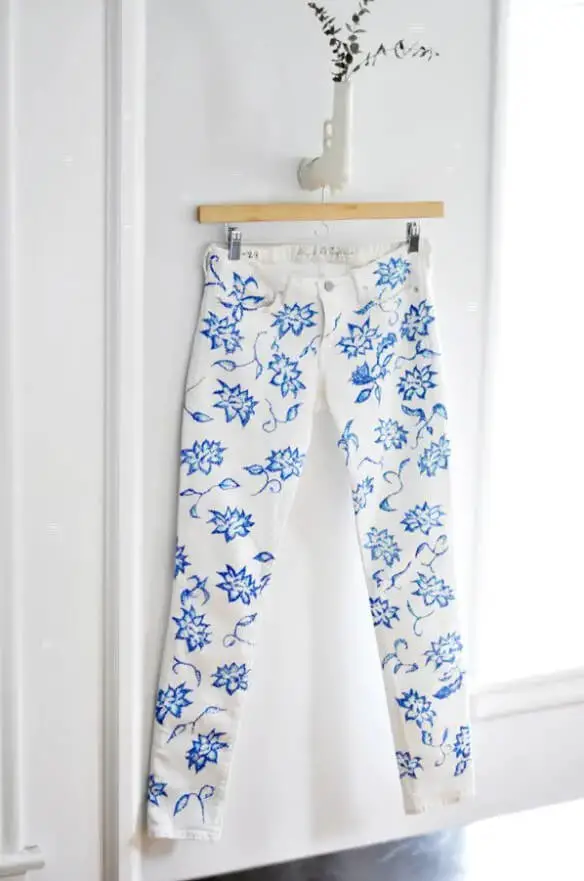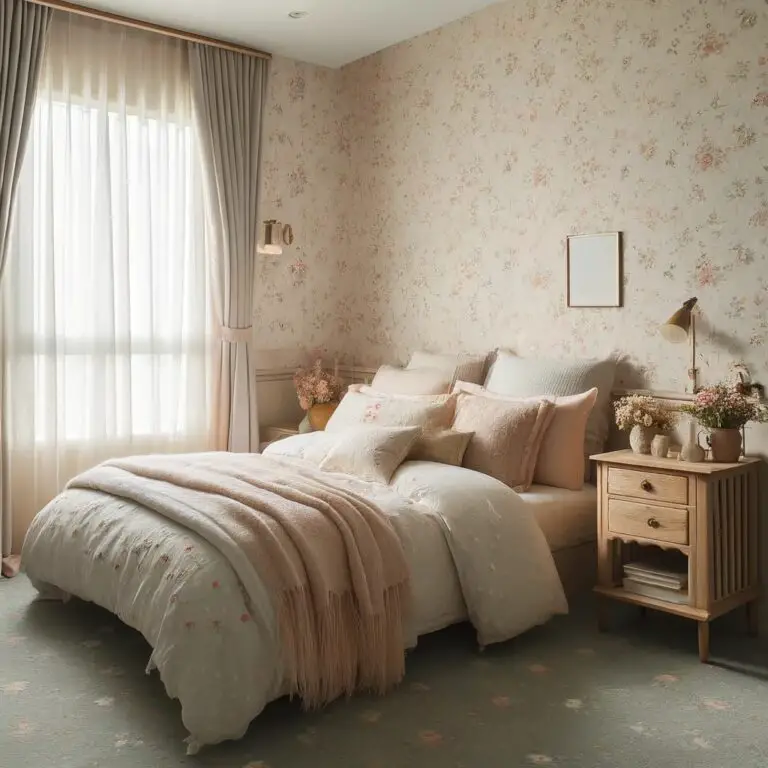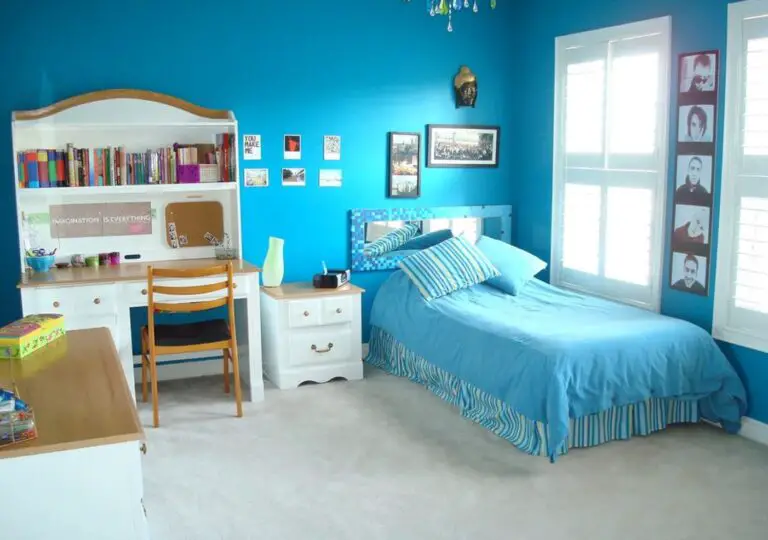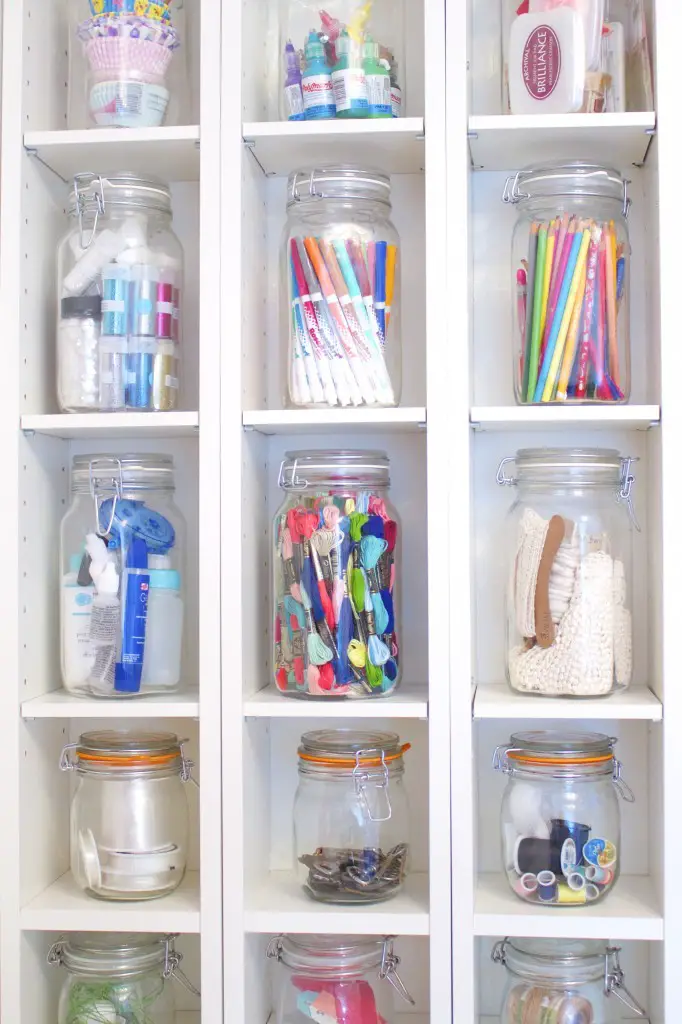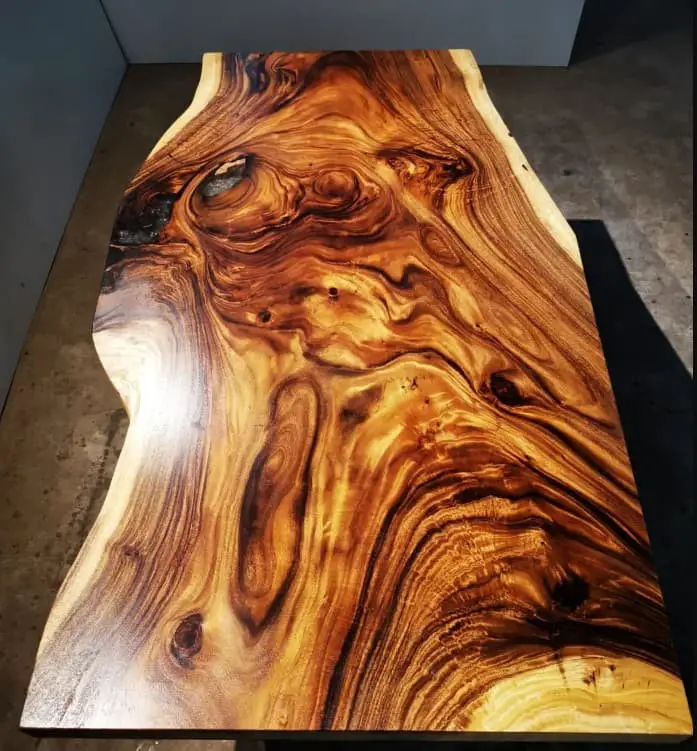15+ Diy Pea Trellis Ideas For Productive & Beautiful Gardens
If you’re struggling to keep your pea plants healthy and productive, consider using pea trellis ideas as a game-changer. Trellising peas is more than just a garden trend; it’s a practical approach to tackling common gardening challenges. By providing support, trellises help pea plants grow upwards, increasing air circulation and reducing the risk of diseases.
This vertical growth pattern also makes the most of limited space, allowing for more plants per square foot and resulting in an increased yield. With a wide range of trellis options available, from simple DIY projects to elegant garden features, there’s something for every garden setup, whether sprawling or small. By incorporating a trellis into your garden, you can significantly improve the health and productivity of your pea plants.
In this article, we’ll explore the benefits of using a trellis for peas, types of trellises available, and creative ideas to help you get started.
Understanding Pea Plants
Pea plants have evolved to thrive in their environment by developing a unique growing habit. Unlike many other vegetables, they don’t just spread out horizontally – instead, they stretch up towards the sunlight, using supports to anchor themselves as they grow. This natural instinct for vertical growth means that gardeners need to provide some sort of trellis or structure for them to climb on, lest they sprawl out on the ground and become vulnerable to diseases and poor pod quality.
Overview of Pea Plant Characteristics and Growth Habits
Pea plants are naturally inclined climbers, leveraging tendrils that stretch out to grasp onto anything in proximity to lift themselves upwards. This inherent climbing nature enables them to optimize their exposure to sunlight, a crucial factor for growth and the ripening of succulent peas. As a result, peas flourish when provided with a support structure, like a trellis, which underscores the significance of this simple yet effective gardening technique.
Importance of Support for Pea Plants
Offering support for pea plants serves a dual purpose – it enhances their overall well-being while also streamlining your gardening experience. By providing structure for pea vines, you foster a healthier environment by allowing air to circulate freely around the plants, thereby minimizing moisture buildup and the risk of fungal diseases. This, in turn, makes harvesting easier, as the pods are more visibly accessible and less prone to damage or missed ripeness.
Types of Peas That Benefit from Trellising
When it comes to supporting your pea varieties, not all require the same level of assistance. However, most benefit from some form of trellising. Understanding which types of peas you’re growing and their support needs is crucial for optimal growth and harvest. Here’s a quick guide to help you determine which peas need support and why: For instance, snap peas are particularly enthusiastic climbers that can reach heights of over 6 feet, making sturdy trellising a must.
This not only prevents the pods from coming into contact with the soil but also keeps them clean and easy to harvest. Snow peas, with their delicate vines, also require moderate to high levels of support. Trellising these peas helps to enhance pod quality by keeping the delicate vines off the ground and preventing the pods from becoming dirty or damaged.
Garden peas, while not as tall as snap peas, still benefit from trellising that provides a gentle lift, keeping their pods clean and simplifying harvest. Overall, providing the right level of support for your pea varieties can make all the difference in terms of growth, yield, and ease of harvesting.
Benefits of Using a Trellis for Peas
Investing in the well-being and yield of your peas by incorporating a trellis into your garden setup not only provides a framework for climbing but also fosters a more thriving and productive environment. Let’s explore the benefits of using a trellis for your pea plants, and how it can elevate their overall health and performance.
Increased Air Circulation and Reduced Disease Risk
The use of a trellis for pea plants yields a significant benefit: enhanced air circulation. This may seem like a minor advantage at first, but it is actually vital to maintaining the overall health of your peas. When left to grow on the ground, peas are more susceptible to staying damp and attracting disease-causing pathogens. By elevating them with a trellis, you create an environment that allows for unhindered airflow around the plants.
This, in turn, hastens the drying process of leaves after rainfall or watering, thereby significantly reducing the risk of fungal diseases.
Easier Harvesting and Maintenance
Harvesting and maintenance tasks become significantly more streamlined when peas are trellised. The supported vines place their pods at a comfortable height, eliminating the need for tedious searching through foliage or bending to gather the crop. This convenience factor greatly enhances the overall gardening experience, allowing you to spend more time enjoying your labor of love and less time struggling with cumbersome growth.
Furthermore, the elevated position of trellised peas facilitates effortless plant care and pruning, as every aspect of the plant is readily accessible for inspection and attention.
Enhanced Garden Organization and Aesthetics
Incorporating a trellis into your garden design can have a profound impact on both functionality and visual appeal. By strategically placing a trellis, you can create a stunning focal point that adds depth and interest to your outdoor space. This not only enhances the overall aesthetic of your garden but also serves as a structural element that defines different areas for various plant species, resulting in a more organized and harmonious layout.
Furthermore, a trellis filled with lush pea plants or other climbing flora can provide a vibrant, green backdrop that further amplifies the beauty of your garden. Ultimately, this simple yet effective addition can elevate your outdoor space from ordinary to extraordinary.
Types of Pea Trellises
When it comes to supporting the growth of pea plants in your garden, selecting the ideal trellis can have a significant impact on both productivity and visual appeal. With various options available, each offering its unique advantages, it’s essential to explore the most suitable choices for your specific needs. Let’s delve into some popular types of trellises that might be worth considering.
Traditional Wooden Trellis: Classic Design
The traditional wooden trellis is a timeless choice for any garden setting. Its classic design and sturdy construction make it an excellent support system for pea plants to climb. With some basic carpentry skills and readily available materials like wood slats or lattice panels, you can build one yourself. Alternatively, many garden stores offer pre-made options if DIY isn’t your cup of tea.
While traditional wooden trellises do have their charm, they may require occasional maintenance over time.
Bamboo Teepees: Utilizing Bamboo Stakes
Teepees crafted from bamboo stakes are a straightforward and organic way to create a cozy space for your pea plants. The setup process is remarkably easy – simply tie the stakes together at the top and spread them out at the base to form a sturdy structure that your peas will happily climb up. This option is ideal for gardeners seeking an affordable and environmentally friendly solution that still delivers excellent results.
Metal Garden Obelisks: Durable and Decorative
If you’re looking for a decorative and functional option that will elevate the aesthetic of your garden, consider metal garden obelisks. These trellises not only provide support for climbing plants like peas, but they also add an element of design to your outdoor space. Metal obelisks come in a variety of designs, allowing you to choose one that fits seamlessly with your garden’s theme.
While they may be more expensive than some other options, their durability and long-lasting nature make them a worthwhile investment.
String or Netting Systems: Affordable and Easy-to-Install
For gardeners dealing with limited space constraints or those on a budget, string or netting systems offer an economical and adaptable solution. By easily attaching these systems to a frame or existing structures, you can create a versatile support system for your pea plants without breaking the bank. While they may require more frequent replacement compared to other options, their flexibility and affordability make them a popular choice among gardeners.
Repurposed Materials: Creative Ideas
In addition to exploring the world of new trellises, many gardeners are finding creative ways to repurpose materials from their surroundings. Old fences, ladders, or wire frames can be transformed into one-of-a-kind pea trellises that not only add a touch of personality to your garden but also contribute to a sustainable practice by reusing materials that might otherwise end up in the trash.
This approach offers a cost-effective way to create unique trellises while minimizing waste and reducing environmental impact.
While each type of trellis has its own advantages, from the rustic charm of wooden structures to the eco-friendly nature of bamboo teepees and the decorative flair of metal obelisks, it’s essential to consider your garden’s specific needs, aesthetic preferences, and budget when selecting the perfect trellis for your pea plants.
By doing so, you’ll be able to create a visually appealing and functional space that allows your peas to thrive.
DIY Pea Trellis Projects
To create a trellis for your pea plants without breaking the bank or requiring advanced carpentry skills, try using basic materials and getting creative. With three DIY project options to choose from – a wooden trellis, a bamboo teepee, and a string or netting system – you can design a structure that not only supports your plants but also enhances the aesthetic appeal of your garden. Simply follow the step-by-step guides outlined below.
Step-by-Step Guide for Creating a Simple Wooden Trellis
Creating a simple wooden trellis is an excellent way to add visual appeal and functionality to your garden. This DIY project requires minimal materials and expertise, making it accessible to anyone looking to bring their outdoor space to life. Here’s a step-by-step guide on how to make one:To start, gather the necessary materials: wooden stakes or slats, nails or screws, a hammer or screwdriver, and twine or wire.
The construction process begins with laying out your wooden stakes on the ground to form a grid or lattice pattern. Ensure even spacing between each stake for optimal results. Next, secure the joints by nailing or screwing the stakes together. Weather-resistant fasteners are recommended to withstand the elements. If desired, create a frame around the grid for added stability and durability.
This step is optional but highly recommended if you’re planning to use your trellis in an exposed area or in windy conditions. Finally, place the trellis in your garden and secure it firmly into the ground using twine or wire. With these simple steps, you’ll have a beautiful and functional wooden trellis that will add character to your outdoor space.
Instructions for Building a Bamboo Teepee Trellis
Building a bamboo teepee trellis is an excellent way to add a touch of eco-friendliness to your garden. This DIY project requires just a few simple materials and some basic construction steps. Here’s how you can create this unique trellis:To get started, gather 3-5 bamboo stakes that are roughly the same length. Hold them together at one end to form the foundation of your teepee. Next, spread out the other ends on the ground to create the shape you desire.
Make any necessary adjustments to achieve the perfect width. Once you’re happy with the shape, secure the top by tying the stakes together using garden twine or zip ties. This will give your trellis the structural integrity it needs to withstand any weather conditions. Finally, place your new bamboo teepee trellis in your garden and invite your peas (or other climbing plants) to come on board. With this simple construction process, you’ll be enjoying a bounty of delicious produce in no time.
Tips for Installing a String or Netting Trellis Effectively
For small spaces, a string or netting trellis is an excellent choice. This simple yet effective solution provides ample support for your pea plants without taking up too much space. Here’s how to set it up:To start, you’ll need some garden netting or string, as well as a support structure like a fence or frame. Once you have these materials, follow these steps:First, attach the netting or string to the support structure, making sure it’s tight and secure.
If you’re using string, tie it horizontally and vertically to create a grid-like pattern. This will give your pea plants plenty of room to grow. Next, position the trellis near your pea plants and gently guide them onto the trellis. Make sure the netting or string is snug around the stems to avoid any sagging.
Some key tips to keep in mind:* Secure the netting/string tightly to ensure even support* Create a grid pattern with the string for ample growth space* Place the trellis close to your plants for easy access and maintenanceEach of these DIY projects offers a unique approach to supporting your pea plants, allowing you to choose the one that best fits your garden’s needs and your personal preferences.
Creative and Decorative Trellis Ideas
Elevate the visual appeal of your outdoor space by incorporating trellises that not only support pea plant growth but also add a touch of creativity to your garden design. This versatile gardening feature can be cleverly integrated with colorful pea varieties and other climbing plants, resulting in a visually stunning display.
Incorporating Trellises into Garden Design for Aesthetic Appeal
A trellis can be a design element that transcends its functional purpose, elevating the aesthetic appeal of your garden. By selecting or designing structures with varied shapes, materials, and textures, you can introduce visual intrigue and focal points throughout the space. The choice of shape, material, and texture can collectively create a captivating landscape that draws the eye and fosters exploration.
Suggestions for Colorful and Ornamental Pea Varieties
While traditional peas are known for their green hues, the world of ornamental peas offers a kaleidoscope of colors to elevate your garden’s visual appeal. By selecting varieties like Purple Podded, which boasts visually striking purple pods against lush green foliage, or Golden Sweet with its bright yellow pods, you can create a stunning display on your trellis.
For an added touch of elegance, consider Desiree Dwarf Blauwschokkers, featuring deep blue flowers that add ornamental value to your garden.
Ideas for Combining Pea Trellises with Other Climbing Plants for Visual Interest
When designing your trellis, consider combining edible pea plants with other climbing flowers to create a visually stunning display. This approach not only maximizes the use of your trellis but also adds depth and interest to your garden. Morning glories, for example, can quickly grow up the trellis, creating a colorful backdrop that complements the pea plants. Meanwhile, sweet peas can weave through the stems, adding fragrance and softness to the overall effect.
Clematis flowers can even be trained to grow up the top of the trellis, providing height and drama to the arrangement. By integrating these elements, you’ll create a garden that’s both productive and picturesque, with a lush, layered look that turns your outdoor space into a vibrant oasis filled with colors, textures, and scents.
Pea support trellis
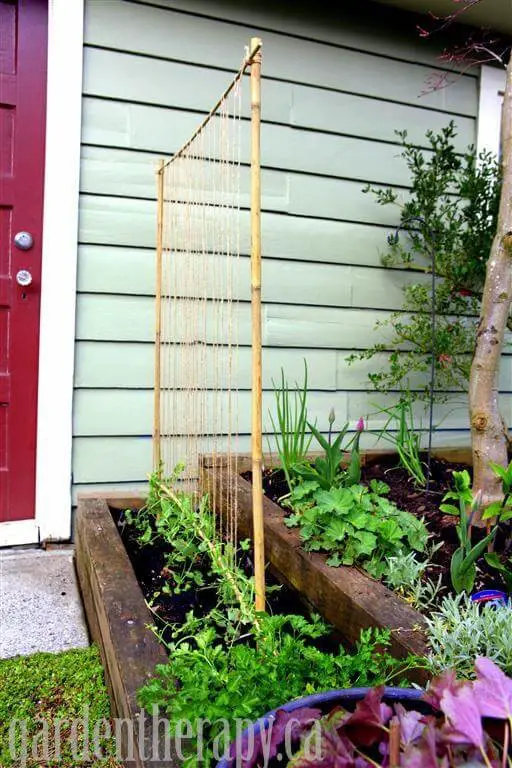
DIY Pea Trellis

DIY Sugar Snap Pea Trellis

Chicken Wire A-Frame Trellis

Recycled Pea Trellis from Twine

Pea Trellis in a Raised Bed

Woven Bamboo Trellis

DIY Pea Trellis from old Crutches

Pea Trellis with Chicken Wire
Pea Trellis Mistakes
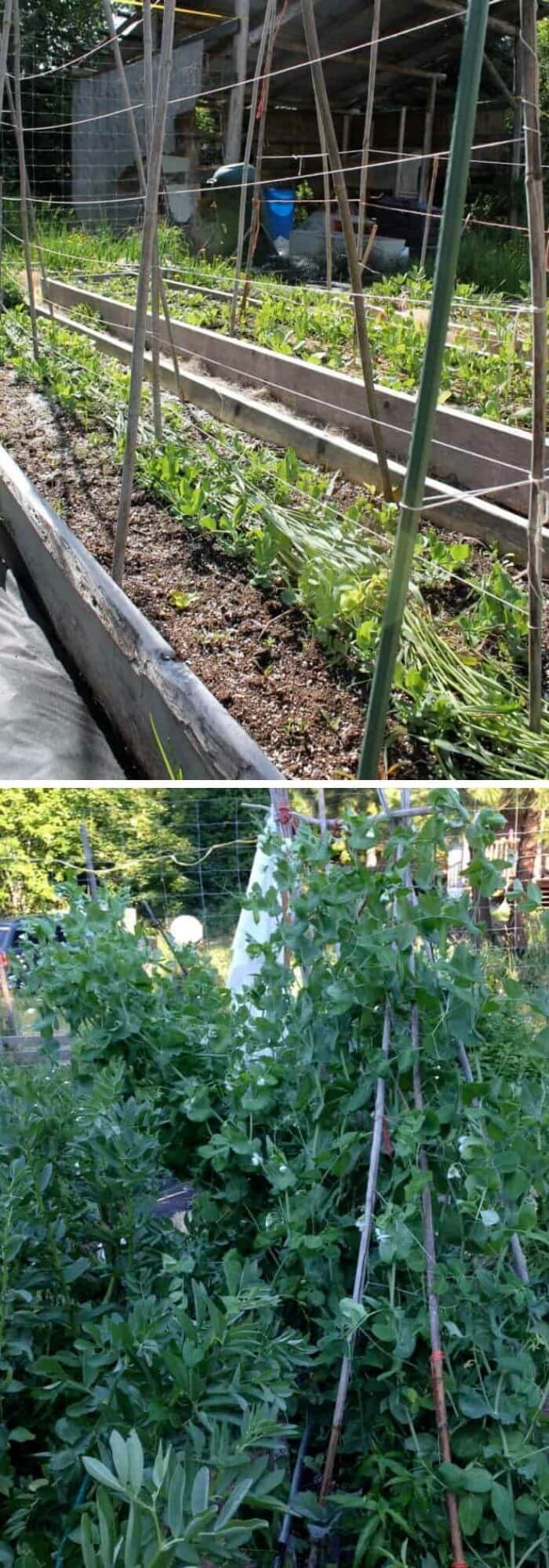
Pea Trellis Fort

Build a trellis for growing peas

Pea Arch Trellis
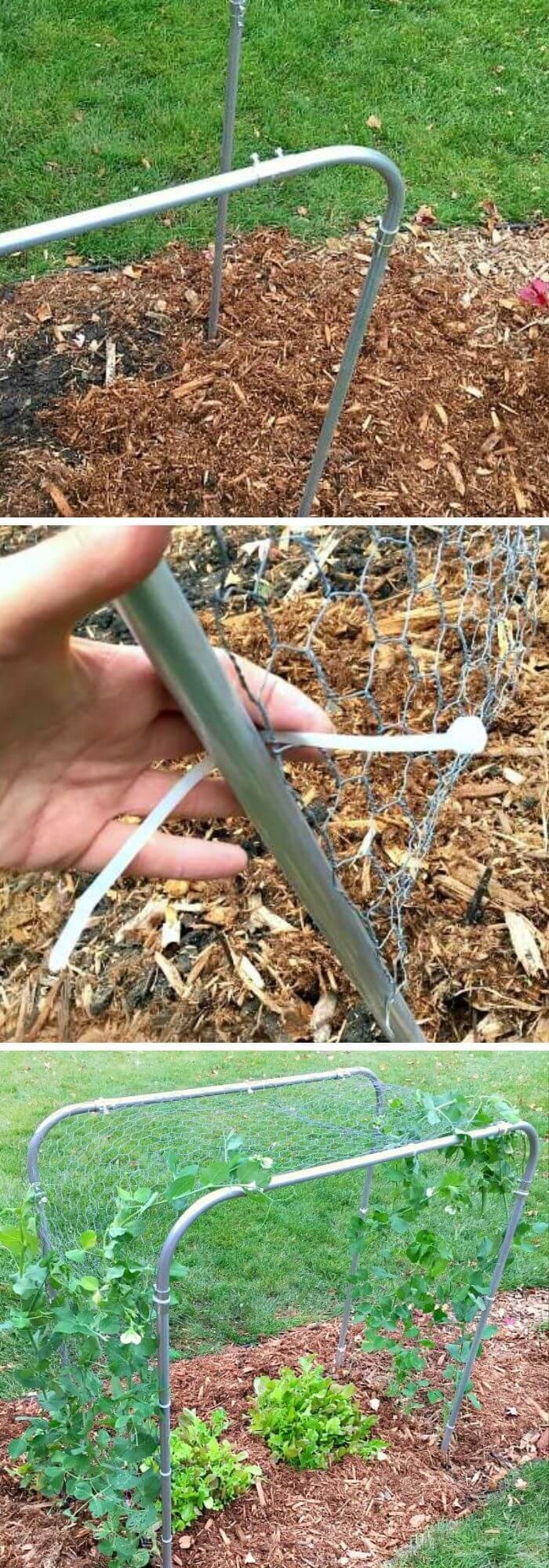
Build Pea Trellis from T-Posts

Wire Pea Trellis

Placement and Installation Tips
When it comes to cultivating a thriving garden, choosing the perfect location and expertly installing your pea trellis are crucial steps that can greatly impact overall success. To guarantee your trellis is both sturdy and supportive of your peas, follow these essential guidelines.
How to Choose the Best Location for Your Pea Trellis
When it comes to growing peas, the location is a critical factor in determining their health and productivity. To get the best out of your pea plants, consider these key factors: The first consideration should be sunlight – peas need at least 6 hours of direct sunlight each day. This ensures they receive the necessary light to undergo photosynthesis and produce a bountiful harvest.
Next, think about accessibility – you’ll want your trellis in a spot that’s easy to reach for regular maintenance and harvesting tasks, such as watering, pruning, and picking those tasty peas. Finally, don’t forget to consider space – make sure there’s enough room around the trellis for the peas to grow without becoming overcrowded, which can lead to reduced air circulation and poor plant health.
Considerations for Sun Exposure and Soil Conditions
When it comes to the health of your pea plants, two key factors stand out: sun exposure and soil conditions. Sunlight plays a crucial role in maximizing growth and pea production, with at least 6 hours of direct sunlight required for optimal results. On the other hand, well-draining soil with a pH range of 6.0-7.5 is essential for supporting healthy root development and nutrient uptake.
By providing your peas with the right balance of sunlight and soil conditions, you can promote optimal growth and overall health.
Advice on Securing Your Trellis Against Wind and Weather
To guarantee the longevity and stability of your trellis and pea plants, it’s crucial to address the challenges posed by various weather conditions. A sturdy foundation is essential for withstanding gusty winds: secure the base deeply in the soil or employ anchors to prevent toppling and shield your plants from harm. Furthermore, select materials that resist rot and corrosion, such as treated wood or galvanized metal, to ensure the trellis remains resilient against rain and moisture.
Finally, take into account the prevailing wind direction and storm paths when positioning your trellis, aiming for a location that provides some natural protection if possible. This thoughtful approach will minimize wear and tear on the trellis and stress on your plants, ultimately leading to a healthier and more productive harvest.
Planting and Training Peas on Your Trellis
For successful pea cultivation, it’s crucial to consider the growth process beyond simply sowing seeds or seedlings. Providing adequate support through training and maintenance is essential for maximizing yields and promoting healthy development. This is particularly important when utilizing a trellis system. By examining the key steps involved in planting, training, and maintaining peas on a trellis, gardeners can optimize their plants’ potential and enjoy a bountiful harvest.
Best Practices for Sowing Pea Seeds or Planting Seedlings
To successfully plant peas, begin by following these guidelines: Start by sowing seeds 1-1.5 inches deep, spaced about 2 inches apart. This ensures proper root development and access to sunlight. When transplanting seedlings, gently handle them when they reach 4-6 inches tall, maintaining the same spacing as with direct seeding. This approach minimizes root disturbance and promotes healthy growth. Finally, keep the soil consistently moist, especially during germination and flowering stages.
Regular watering supports sprouting, pod development, and overall pea growth.
Techniques for Guiding Peas to Climb the Trellis
To train your peas to climb a trellis effectively, employ these straightforward techniques: Begin by gently twining pea tendrils around the structure, which fosters upward growth and encourages the plant to make its way up. As the plants develop, conduct regular checks to ensure new growth is aligned with the trellis, making any necessary adjustments to guarantee optimal coverage and support.
If heavier vines start to form, consider adding additional support using garden ties to prevent damage or promote continued upward progress.
Maintenance Tips to Ensure Healthy Growth and Maximum Yield
To reap the benefits of a thriving pea plant garden, it’s crucial to consistently maintain your crop as it grows. By implementing these simple yet effective tasks, you’ll be rewarded with healthy, robust plants that produce abundantly.
Start by dedicating time to regular weeding, which will prevent your peas from competing for vital resources like water and nutrients. When watering, make sure to target the soil at the base of the plants, avoiding the foliage altogether.
This simple trick will significantly minimize the risk of disease outbreak.
In addition to weeding, applying a layer of mulch around your pea plants will work wonders in retaining soil moisture, keeping roots cool and shaded, and suppressing further weed growth. By doing so, you’ll be nurturing healthier plants that are better equipped to thrive and produce higher yields.
Conclusion
A trellis can elevate your pea plant game by providing numerous benefits, from enhanced air circulation and reduced disease risk to improved aesthetics and easier harvesting. By exploring different types of trellises – whether traditional wooden designs or innovative uses of repurposed materials – you can find the perfect fit for your garden style and needs. Don’t be afraid to experiment with various ideas, from simple string and netting systems to elaborate bamboo teepees.
Each choice brings its own unique rewards, supporting healthy plant growth while contributing to the overall beauty and productivity of your garden space. Ultimately, the best trellis for your garden is one that harmoniously balances the needs of your plants, personal aesthetic, and practical requirements. So, get creative and make it truly your own!
FAQs: Pea Trellis Ideas
What is the best material to use for a pea trellis?
When it comes to choosing the ideal material for a pea trellis, consideration should be given to both functional and aesthetic requirements. Wooden options provide a timeless appearance and reliable structure, while bamboo stakes offer a sustainable and natural solution. For added visual appeal, metal garden obelisks can add an ornate touch. Alternatively, for those on a budget or with limited space, simple string or netting systems offer a practical and effective means of support.
Ultimately, the choice should be influenced by the desired blend with the surrounding garden design and the type of peas being grown.
How tall should a pea trellis be?
Pea plants exhibit a remarkable range in terms of their stature, with some varieties soaring up to 6 feet tall. When it comes to providing support for these vining plants, a trellis’s minimum height should ideally be around 5-6 feet, allowing the majority of pea varieties to reach their full potential. However, it’s crucial to consider the specific characteristics of your chosen pea variety and adjust the trellis height accordingly to ensure optimal growth.
Can I make a pea trellis myself?
When it comes to creating a DIY pea trellis, one of the greatest advantages is the versatility in materials. You can choose from a range of options, including wood, bamboo, string, and netting, allowing you to get creative with your design. For instance, simple structures like bamboo teepees or string trellises are relatively easy to construct and can be customized to seamlessly integrate into any garden space.
By building your own trellis, not only do you reap the benefits of cost-effectiveness, but also have the freedom to tailor the structure to meet your garden’s unique needs and visual preferences.
How do I train peas to climb the trellis?
Peas have an innate tendency to seek support and will instinctively start climbing a trellis using their flexible tendrils. To facilitate this natural process, it’s essential to guide the emerging shoots towards the trellis as they grow. While gentle prodding might be necessary to nudge them in the right direction, you can also use soft garden twine to loosely tie the shoots to the trellis if required.
In many cases, simply placing the pea shoots near the trellis is sufficient to get them started on their upward journey.
Do all pea varieties need a trellis?
While not all pea varieties necessitate a trellis, certain cultivars do benefit from one. Dwarf or bush peas, bred to grow compactly, can thrive without support, whereas climbing types, encompassing most snap and snow peas, derive advantages from trellising. By providing this structure, gardeners can optimize space usage, enhance air circulation around the plants, and simplify harvesting.
As a rule of thumb, consult the seed packet or plant tag for specific guidance on the pea variety you’re working with.

